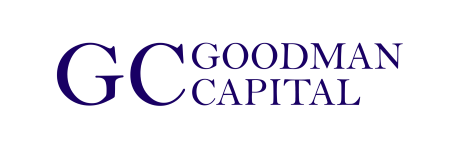 By Dr. Jim Dahle, WCI Founder
By Dr. Jim Dahle, WCI FounderPassive income is a buzzword(s) that is thrown out frequently in the investing space. It appeals, or at least should appeal, primarily to those who would like to work less (or not at all) while maintaining the same or higher spendable income. If you have no interest in working less or spending more, then it shouldn't have much appeal—at least for now.
The problem with additional income is that it often comes with an additional tax bill. All else being equal, it is actually far more tax-efficient to have a smaller portion of your overall return come from income. It's amazing how many investors don't understand that point.
Becoming overly income-focused not only leads to tax inefficiency in many cases, but it can also lead to bad investing decisions. The classic examples may be really, really junky junk bonds and things like peer-to-peer lending. The income from these types of investments can be really high, but that's only because your principal is dropping in value as defaults occur. What the uninformed investor thinks is income is actually the return of principal. A 20% yield is not a 20% return if the value of your investment dropped 10% that year.
When it comes to an investment or asset class, you FIRST need to ensure it will provide a decent return for the risk taken. Then AND ONLY THEN consider how much of the return comes from income vs. appreciation.
A Spectrum of Passivity
Another consideration is just how passive that income becomes. When I hear people talk about passive income, they're often talking about some type of real estate investing. That's not always so passive. You want some really, really passive income? How about buying a very broadly diversified index fund? You can buy it in 30 seconds and literally forget about it for the next few decades. Like clockwork, it will send you fully spendable income every month, quarter, or year. Forever. Without you ever doing another thing. That's passive income. Same thing with sticking your money into a money market fund or high-yield savings account. Super passive.
The problem people have with this approach for passive income is not that the income isn't passive enough. Their problem is that the income isn't high enough. Here are some examples using current yields as of August 2025.
- Large Growth Stocks (VUG) 0.41%
- US Stocks (VTI) 1.16%
- Small Value Stocks (VBR) 2.03%
- Large Value Stocks (VTV) 2.17%
- International Stocks (VXUS) 2.86%
- US REITs (VNQ) 3.89%
- Money Market Fund (VMFXX) 4.22%
- US Bonds (BND) 4.33%
And those fixed income yields are far higher than they were just a few years ago when interest rates were ridiculously low. The people looking for passive income are generally looking for a higher yield than that. Perhaps 6%-12% or even higher. As they seek those yields, the problems become
- They take on too much risk and
- The income becomes less and less passive
Let's consider, just for a moment, the spectrum of passivity. On the left side of this spectrum, we have these very, very passive investments we call mutual funds. On the right side, we have, well, your job. This spectrum for doctors might look like this, going from left to right:
- Mutual funds/bank accounts/CDs/Treasury bonds
- Private real estate/lending/oil and gas funds
- Real estate syndications/direct peer-to-peer lending/individual oil and gas investments
- Investments in the businesses of others
- Direct real estate investing
- Radiology/dialysis/surgical/urgent care centers
- Successful entrepreneurship
- Your job
When I first started The White Coat Investor in 2011, it was started as a business. For some reason that year, I got really excited about “passive income.” It turned out that income, which didn't really exist for several years, was never very passive. It's a little more passive now that dozens of people work here—including 10 full-timers—but we only had a few part-timers for the first nine years. I put at least as much time in at WCI those nine years as I did my clinical work, and Katie now does more work here than I do.
Few would call that passive income, but it is an example of successful entrepreneurship. There have been plenty of people who have tried something similar, where the income never came. I think I counted 100 physician financial blogs at one point back in 2016 or so.
The Greatest Hits on the Passive Income Spectrum
I wanted to point out a few places on the passive income spectrum that I think are worth noting for high-income professionals with an interest in passive income.
#1 Securities
Don't discount the value of the easy stuff. The income might not be that high, but with extreme passivity, it has to be considered. Stock mutual fund dividends generally enjoy qualified dividend tax status. You can get more income with a good money market fund, bond fund, or high-yield savings account. Municipal bond and money market funds pay federal (and possibly state) income tax-free income. You can lock in principal using individual Treasuries and index your return to inflation using TIPS or I Bonds.
#2 Real Estate Debt Funds
Five percent of our portfolio is invested in private real estate debt funds. While some due diligence is required up front, these evergreen funds require precious little ongoing monitoring and pay a pretty high income, typically in the 7%-12% range. For the life of me, I can't figure out why they're not more popular among the passive income crowd. Most of the loans are in “first lien” position, meaning that if the fund forecloses, we should recover a large amount, if not all, the principal—even in a nasty real estate downturn. The only real downside is that the income is taxed as ordinary income, but even that can be mitigated—at least by an investor who doesn't wish to spend it immediately—by sticking the investment into a self-directed IRA or solo 401(k).
More information here:
Private Real Estate Lending Funds
#3 Evergreen Equity Real Estate Funds
Building a portfolio of private syndications requires quite a bit of due diligence work. But you can pay someone to do that. That's called a private equity real estate fund. Most of these funds last 3-10 years. Then, they return your principal, and you have to start over. But a few of them are evergreen, which are almost as set-and-forget-it as a good index mutual fund. While the yield is generally significantly lower than you would get with a debt fund, the actual cash yielded typically rises over time, and the yield may be completely tax-free if sheltered by depreciation.
Interested in exploring private real estate investing? Make sure to sign up for the free White Coat Investor Real Estate Newsletter that will give you important tips for investing in this profitable asset class while also alerting you to new opportunities. Make sure to start your due diligence with those who support The White Coat Investor site:
#4 A Managed Portfolio of Short-Term Rentals
I have often said that the fastest reasonably reliable pathway out of medicine is building your own short-term rental (STR) empire. With as few as five properties, perhaps requiring as little as $500,000 total down, a burned-out doctor can produce a livable income. In the beginning, that probably means you're doing most of the management. But give it a little more time and capital, and that also can be hired out, making the whole process quite a bit more passive.
This is obviously nowhere near as passive as BND, but the income can be much higher. In fact, many successful STR investors note a cash-on-cash return in the 20% range. Despite being much less passive than most of the ideas on this list, this option still deserves a place, given that income level. Our No Hype Real Estate Investing course includes a significant section on this option.
More information here:
What to Know About Buying a Vacation Home
#5 Passive Medical Investments
I cannot tell you how many doctors have let me know their best passive investment was actually related to their work and specialty. While every private investment is unique and risky and must be evaluated carefully on its own merits, these have worked out well for so many doctors over the years that I think they deserve a place on this “Greatest Hits of Passive Income” list. These investments tend to be specialty-specific. Here are some examples:
- Surgeons and anesthesiologists: Ambulatory surgical centers
- Gastroenterologists: GI centers
- Pulmonologists: Sleep centers
- Nephrologists: Dialysis centers
- Pathologists: Labs
- Emergency and Primary Doctors: Urgent care centers or free-standing emergency departments
- Radiologists: Radiology centers
These all have two things in common.
- You can often charge patients and their insurance a more lucrative facility fee of some type in addition to the professional fee, and
- Other people are there generating income for you. You are no longer labor but capital.
When these opportunities pop up for you, you would do well to seriously consider them, even if it involves taking on additional debt temporarily or making a decreased contribution to your retirement savings for a year or two.
What do you think? Do you have an interest in passive income? What has your approach been and why? What would be on your “greatest hits of passive income” list?






